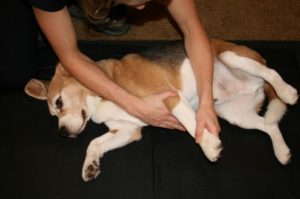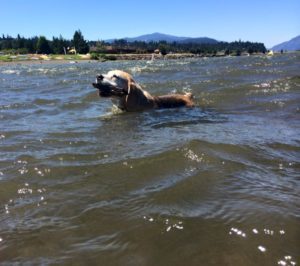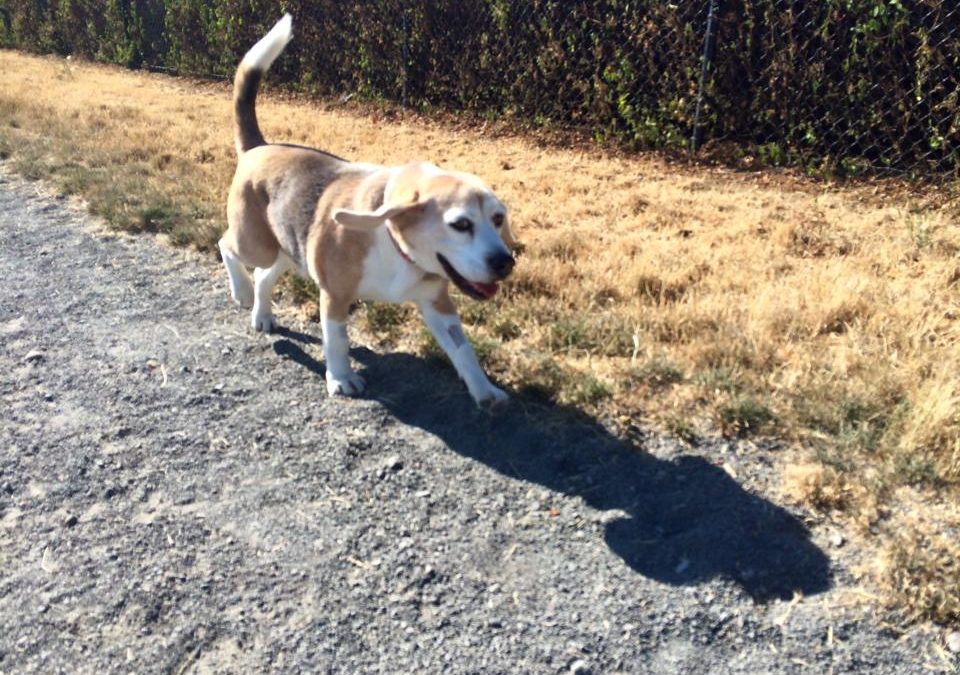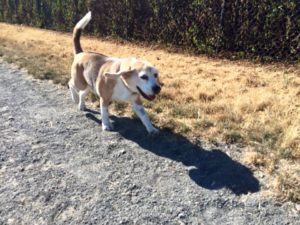What is considered geriatric for a dog anyhow? In case you were wondering, here is a chart I grabbed from a Canine Rehab text book*.
Typical ages at which Various-Sized Dogs may be Considered Geriatric*
WEIGHT AGE (Mean Avg)
Small dogs 0-20 lb 11.48 yrs
Medium dogs 21-25 lb 10.19 yrs
Large dogs 51-90 lb 8.85 yrs
Giant dogs >90 lb 7.46 yrs
Our furry friends need to stay active as they age, just like us. The normal process of aging includes changes in muscle physiology, cognitive function, hair, coat and skin, hearing and vision. The most common problem of the musculoskeletal system in geriatric dogs is osteoarthritis (OA). This also happens to be one of the most common problems I see in my practice.
While we can’t reverse the aging process, we can can take steps to ensure our white-faced furry companion is not only  comfortable, but enjoys their senior years.
comfortable, but enjoys their senior years.
As your geriatric dog reduces activity, muscle mass begins to atrophy while the weight creeps up. This weight gain adds stress on the already hypomobile, arthritic joints, which is often painful and leads to even less activity. You can see how this becomes a vicious cycle.
Try to remember the activities your dog LOVED doing when they were younger, and see if they are still interested in doing them, depending on their current health condition, and in a modified format. Pay attention to your dog and don’t force him/her to do anything they don’t want to do; it should be fun! Here are a few ideas:
Short, frequent walks. No more loooong hikes that will leave your furry senior wiped out for days, not to mention re-exacerbate a current issue. These short, frequent walks will keep your pet active throughout the day.
Gentle play in the house (on non-slick surfaces). Even if your dog is not interested in toys anymore, try playing with their feet in a playful way.
Tactile stimulation. Anything that will engage forceful action of the legs will improve muscle tone to that area. Use your fingers to tickle the body or pinch the webs between the toes to encourage your dog to actively kick. Do this multiple times throughout the day. You can also scrub the legs vigorously on the sides of the legs.
Scavenger hunt. If your dog still has a functioning nose, hide treats throughout the house and have them hunt them down. My beagle LOVES this game!
Passive ranges of motion. This involves taking the legs through a bicycle motion of the legs. Be gentle if your dog is arthritic.
Water treadmill. Underwater treadmills are great for building strength and endurance ands allows for normal weight bearing with less load on the joints. Depending on the water levels, it can decrease weight bearing by over 50%.
Tricks and treats. With a bag of treats in hand, have your dog follow you into each room of your house. When you get to that room, have your dog do a trick and reward him/her if they do it right. Do this for 5-10 minutes, changing the order of room entry.
Before starting any activity, be sure that your geriatric dog has had a geriatric wellness exam from your primary veterinarian.

Best in Health,
*Canine Rehabilitation and Physical Therapy, by Darryl Mills and David Levine



Recent Comments